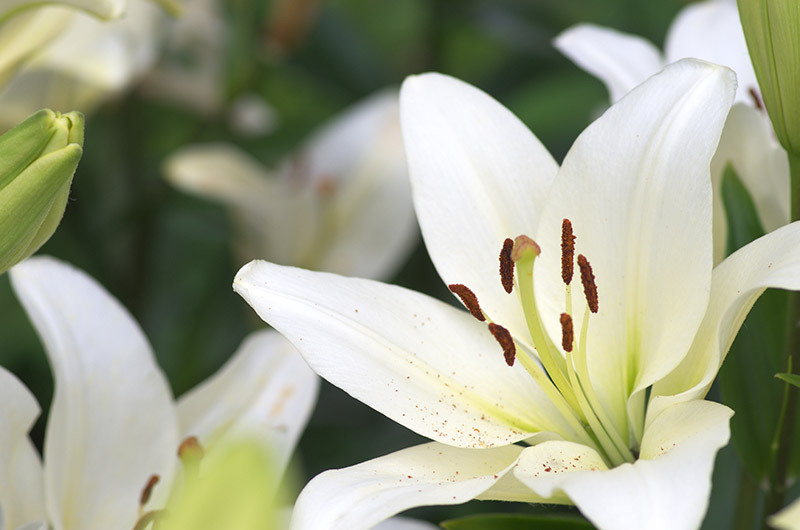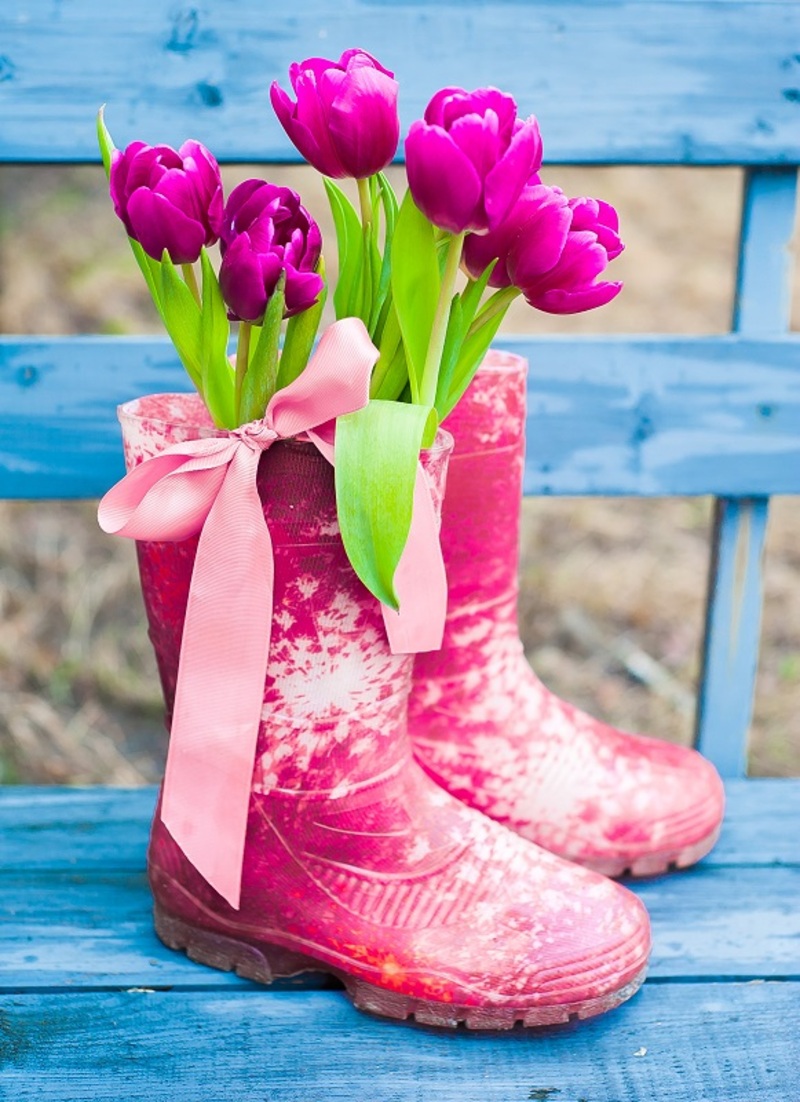Mastering Hydrangea Care: Your Ultimate Guide
Posted on 13/08/2025
Mastering Hydrangea Care: Your Ultimate Guide
Hydrangeas are among the most beloved flowering shrubs, admired for their lush blooms, versatile colors, and ability to brighten up any garden. Whether you are a seasoned gardener or a beginner, understanding the ins and outs of hydrangea care will help you cultivate healthy, vibrant plants that become the highlight of your landscape. In this comprehensive guide, we'll delve deep into everything you need to know for growing hydrangeas successfully--from selecting varieties to troubleshooting common issues.
Why Choose Hydrangeas?
- Long-blooming and vibrant flowers
- Variety of shapes, sizes, and colors
- Tolerates a range of climates and soils
- Attracts pollinators like bees and butterflies
- Low maintenance when properly cared for

Types of Hydrangeas
Mastering hydrangea care starts with choosing the right hydrangea variety for your garden. Each type has unique requirements and characteristics:
Bigleaf Hydrangea (Hydrangea macrophylla)
- Appearance: Large, globe-shaped flower heads
- Flower color: Blue, pink, or purple depending on soil pH
- Status: Most popular choice for gardens
Panicled Hydrangea (Hydrangea paniculata)
- Appearance: Cone-shaped white-to-pink flower clusters
- Toughness: Thrives in colder climates
- Notable: Includes well-loved 'Limelight' variety
Oakleaf Hydrangea (Hydrangea quercifolia)
- Appearance: Deeply lobed oak-like leaves and creamy white blooms
- Autumn Beauty: Dramatic foliage color change in fall
- Shade Tolerance: Excellent for woodland gardens
Smooth Hydrangea (Hydrangea arborescens)
- Appearance: Large, rounded white flowers ('Annabelle' is best known)
- Cold Hardy: Can survive in USDA Zones 3 and above
Hydrangea Planting Guide
To master hydrangea care, start with the right planting techniques:
1. Site Selection
- Sun vs. Shade: Most hydrangeas prefer morning sun and afternoon shade. Too much hot, midday sun can scorch leaves and damage blooms.
- Soil Conditions: Hydrangeas thrive in well-draining soil rich in organic matter. Amend heavy clay or sandy soils with compost for best results.
2. Planting Process
- Dig a hole that is twice as wide and as deep as the root ball.
- Gently tease roots if bound, and set the plant so the top of the root ball is level with the soil surface.
- Backfill with enriched soil, ensuring no air pockets remain.
- Water deeply and apply mulch to retain moisture and regulate soil temperature.
Tip: Space hydrangeas at least 3 feet apart to allow air circulation and minimize fungal diseases.
Mastering Watering Needs
Hydrangeas need consistent moisture, especially during their first two years and in extreme heat. Follow these essential watering guidelines:
- Frequency: Water deeply 1-2 times a week; adjust with rainfall.
- Soil Moisture: Keep soil slightly moist but never soggy; hydrangeas suffer equally from drought and waterlogging.
- Morning Focus: Water early in the day to prevent fungal growth and leaf scorch.
- Mulching: Apply a 2-3 inch mulch layer to conserve moisture and suppress weeds.
*Using drip irrigation or a soaker hose is ideal for targeted watering.*
Fertilizing Hydrangeas for Abundant Blooms
Successful hydrangea care includes proper fertilization. Hydrangeas are not heavy feeders, but benefit from timely nutrients:
- Early Spring: Apply a slow-release balanced fertilizer as new growth appears.
- Summer: Feed again if growth appears weak, but avoid late-summer fertilization as it may spur tender growth prone to winter damage.
- Variety Tip: Some bigleaf hydrangeas respond well to fertilizers for acid-loving plants, especially when aiming for rich blue hues.
Avoid over-fertilizing, as excess nitrogen encourages leafy growth at the expense of flowers.
How to Change Hydrangea Flower Color
Did you know you can influence the color of bigleaf hydrangea blooms? This garden magic depends on soil pH:
- Acidic Soil (pH below 6): Produces blue flowers.
Add aluminum sulfate or organic mulches like pine needles to acidify the soil. - Alkaline Soil (pH above 7): Produces pink flowers.
Apply garden lime to make your soil more alkaline. - Neutral Soil: Yields purple or mixed hues.
Note: This trick works best with Hydrangea macrophylla. White, oakleaf, and panicle hydrangeas generally do not change color in response to soil pH.
Pruning Hydrangeas: Step-by-Step Guide
Proper pruning is crucial to keeping your hydrangeas healthy and ensuring prolific blooms. However, pruning techniques vary by type:
When to Prune
- Bigleaf and Oakleaf Hydrangeas: Prune immediately after flowering in summer, as they bloom on old wood.
- Panicle and Smooth Hydrangeas: Prune in late winter or early spring, as they bloom on new wood grown each season.
Pruning Steps
- Remove dead or damaged wood first to encourage healthy growth.
- Shape the plant lightly, avoiding severe cuts--especially for old wood bloomers.
- Thin crowded stems to improve air circulation.
- Deadhead spent flowers for a tidy appearance, but leave some for winter interest if desired.
Always use sharp, sterilized pruners to prevent disease transmission.
Winter Care for Hydrangeas
In cold climates, winter protection can be crucial. Here's how to safeguard your hydrangeas:
- Apply mulch around the base to insulate roots--especially in areas with freeze-thaw cycles.
- Wrap young or exposed shrubs with burlap to shield buds from harsh winds.
- Water well before the ground freezes, as dry soil can harm roots.
Panicle and smooth hydrangeas are especially cold hardy, but bigleaf types may require more attention.
Common Hydrangea Pests and Problems
Effective hydrangea care involves vigilance against common problems:
Pests
- Aphids: Small green or black insects on leaves and stems. Remove with strong water spray or insecticidal soap.
- Spider Mites: Fine webbing and stippled leaves in hot, dry conditions. Improve humidity and hose off leaves.
- Scale Insects: Hard shell pests on stems. Prune infested branches and use horticultural oil.
Diseases
- Powdery Mildew: White, powdery residue on leaves. Enhance air flow and use fungicidal sprays if needed.
- Leaf Spot: Brown or purple spots on leaves. Remove affected foliage and avoid overhead watering.
- Root Rot: Wilting and yellowing leaves due to poor drainage. Improve soil drainage and avoid soggy soil.
Prevention is easier than cure--ensure good cultural practices and promptly address issues.
Hydrangea Care Through the Seasons
Year-round hydrangea care ensures ongoing health and beautiful blooms:
- Spring: Clean up old mulch, fertilize, and prune as appropriate for type.
- Summer: Water regularly, watch for drought stress, and deadhead spent flowers.
- Fall: Add mulch, check for diseases or pests, and reduce watering as temperatures drop.
- Winter: Protect vulnerable varieties in cold regions, especially young plants.
Hydrangea Care in Containers
If you're short on space or wish to brighten patios, hydrangeas grow beautifully in containers:
- Use large, heavy pots with excellent drainage.
- Choose compact varieties like 'Cityline' hydrangeas.
- Fill with high-quality potting mix--a blend for acid-loving plants can enhance blues.
- Water frequently, as containers dry out faster, but avoid waterlogged roots.
- Feed every 4-6 weeks with a balanced fertilizer during the growing season.
- Move containers to sheltered spots for winter in cold climates.
Top Hydrangea Varieties to Grow
- 'Endless Summer' Hydrangea: Repeat blooms on both old and new wood for all-season color.
- 'Limelight' Hydrangea: Large panicles of lime-green fading to pink--stunning structural plant.
- 'Annabelle' Hydrangea: Giant, snowball white flowers and extreme cold tolerance.
- 'Oakleaf' Hydrangea: Striking leaves and four-season interest--great for shade.
- 'Cityline Rio' Hydrangea: Perfect dwarf variety for pots and small gardens.

Frequently Asked Questions About Hydrangea Care
- Why won't my hydrangeas bloom?
Improper pruning, late frosts, or insufficient light are the usual culprits. Prune at the right time for your type and ensure adequate sun. - Are hydrangeas deer-resistant?
Hydrangeas are not deer-proof and may need protection if deer are prevalent. - How often should I fertilize hydrangeas?
Generally, once at the start of the growing season and again (if desired) in mid-summer. - Can I grow hydrangeas indoors?
Short-term as a gift plant, yes, but most hydrangeas require a dormant winter period and thrive best outdoors.
Conclusion: Create a Show-Stopping Garden with Hydrangeas
Mastering hydrangea care means understanding your specific plant's needs and responding through the seasons. With the right location, soil, watering, pruning, and winter protection, your hydrangeas will reward you with years of stunning color and beauty. Whether you dream of endless blue and pink blooms or stately white flower heads, hydrangeas are both forgiving and rewarding plants for every gardener.
Unleash the full potential of your landscape by becoming adept at hydrangea gardening. Your ultimate garden masterpiece awaits!
For even more hydrangea tips, keep exploring our guides on how to care for hydrangeas, best hydrangea varieties, troubleshooting, and seasonal hydrangea gardening advice. Happy gardening!
Latest Posts
Discover the Secrets Behind an Orchid Care Guide
Understanding Peony Flowers: Symbolism and Colour Insights
Unearth Seven Fascinating Tulip Facts You Likely Don't Know
Mastering Hydrangea Care: Your Ultimate Guide
Unveiling the Secrets of Your Birth Flower and Its Significance





